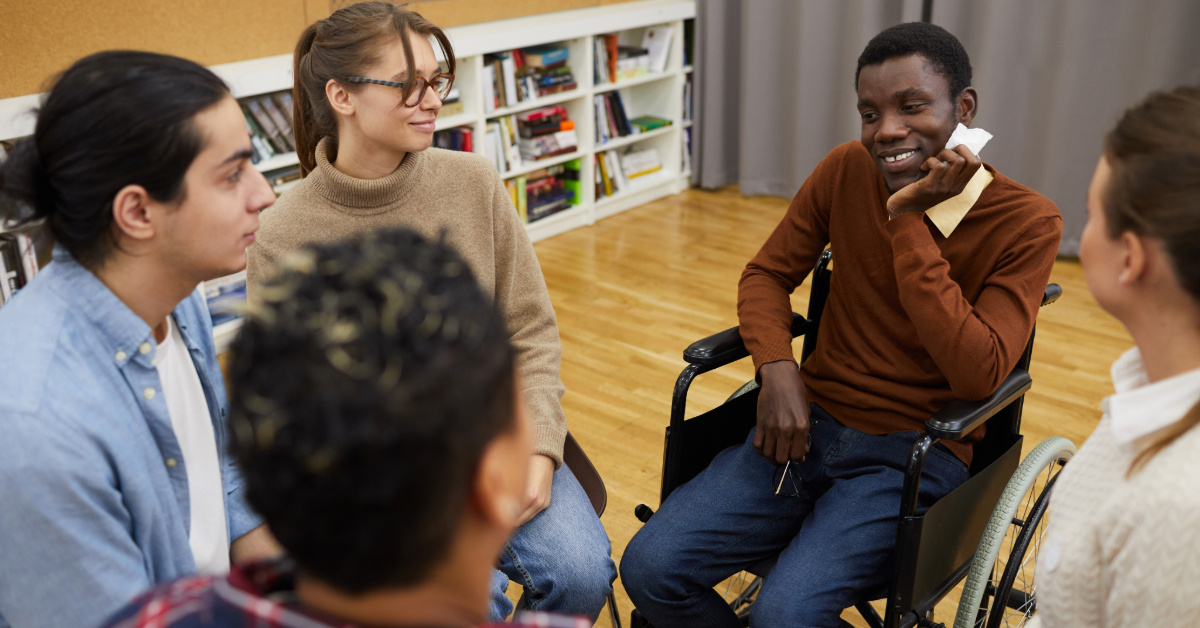
Back-to-school season is often filled with excitement and anxiety for students. While this is true for all students, including those who are neurotypical, neurodiverse, or disabled, back-to-school anxiety can be particularly pronounced among those who worry about fitting in or being accepted by their peers. As educators, we often focus on various strategies to ease this anxiety, but one solution that deserves more attention is inclusive education.
Inclusive education involves teaching all students in the same classroom environment. This approach not only supports the academic and social development of neurodiverse and disabled students but also offers profound benefits for neurotypical students. By integrating students with different abilities, inclusive classrooms foster a supportive learning environment that enhances empathy, reduces social anxiety, and encourages positive social interactions among all students.
Research consistently shows that inclusive environments can reduce feelings of exclusion, which are linked to increased risks of depression and anxiety. This is particularly significant for students with autism spectrum disorder (ASD), who may find social interactions challenging. In inclusive settings, these students have more opportunities to engage in meaningful socialization, which can improve their social development. At the same time, neurotypical students learn to interact with peers with different abilities and needs, fostering empathy and understanding.
Empathy is a critical skill that extends beyond the classroom. As students learn to understand and appreciate the differences among their peers, they develop a sense of equity and inclusivity that will serve them throughout their lives. For educators, fostering empathy should be a key goal, as it not only enhances students' social skills but also contributes to a more harmonious and accepting classroom environment.
To learn effectively, students must be in environments where they feel safe, have trusting relationships, and feel a sense of belonging. Inclusive learning environments can reduce anxiety among students, allowing them to feel accepted by their teachers and classmates. When students feel accepted, they are provided with an environment where feelings of trust and belonging can evolve, further improving the academic and personal development of all students.
Educators can implement a variety of strategies to accommodate the diverse sensory and emotional needs of their students. For instance, calming classroom design elements, such as dimmable lighting and flexible seating options, can help reduce overstimulation. Establishing a calming corner provides students with a space to regroup if they feel overwhelmed. Additionally, integrating mindfulness and grounding activities throughout the day can help all students—neurotypical and neurodivergent alike—stay focused and manage anxiety.
These strategies do more than just accommodate individual needs; they create a classroom culture that values and supports all students. As their overall well-being improves, so does their academic performance. Educators play a crucial role in setting the tone for inclusivity by modeling acceptance and encouraging positive interactions among all students.
Many educators understand the value of inclusive education but lack the knowledge to implement it effectively. Schools and districts must provide professional development opportunities that equip teachers with the tools and strategies needed to create inclusive classrooms. This includes training on differentiated instruction, sensory-friendly classroom design, and effective communication strategies that promote positive interactions among students with varying abilities.
Additionally, schools should strive to foster a culture of inclusivity at all levels. This can be achieved through policies that provide adequate resources and support for teachers and involve families in the process. Collaboration between educators, administrators, and families is key to creating an inclusive educational environment that benefits all students.
By embracing inclusive education, teachers not only support their neurodiverse and disabled students but also enrich the learning experiences of neurotypical students.
Gina Brady is the sensory support and training program manager at Fraser, a Minneapolis organization that provides healthcare and inclusion services for people with autism, mental health issues, and disabilities.
At any given time, a president’s administration manages numerous policies, programs, and budgets that collectively form their education agenda. Much of this work goes unnoticed by the public due to...
The story you tell yourself about your own math ability tends to become true. This isn’t some Oprah aphorism about attracting what you want from the universe. Well, I guess it kind of is, but...
If you have a child with disabilities, you’re not alone: According to the latest data, over 7 million American schoolchildren — 14% of all students ages 3-21 — are classified as eligible for special...
Your donations support the voices who challenge decision makers to provide the learning opportunities all children need to thrive.
Ed Post is the flagship website platform of brightbeam, a 501(c3) network of education activists and influencers demanding a better education and a brighter future for every child.
© 2020–2024 brightbeam. All rights reserved.